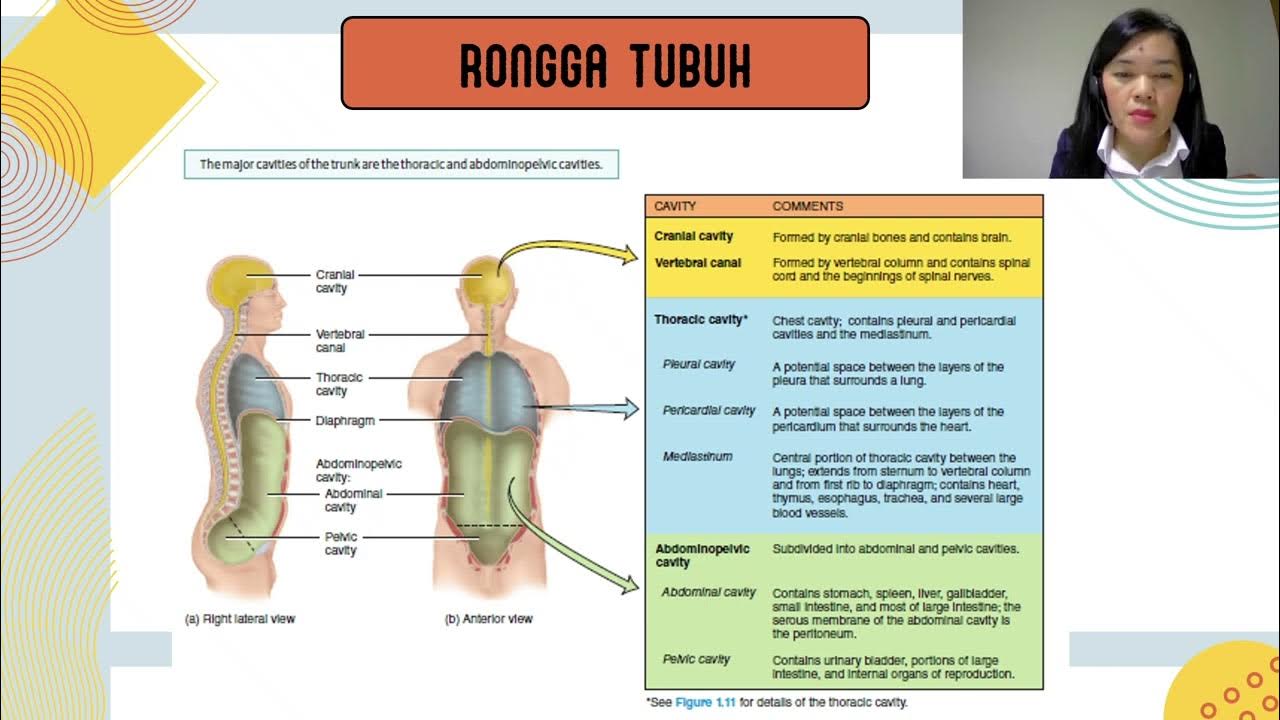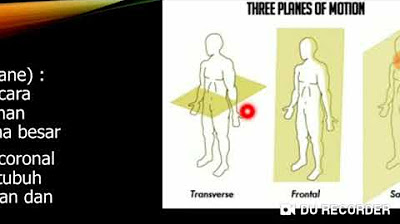A&P I Lab | Exercise 1: Anatomical Position, Directional Terms, & Body Planes
Summary
TLDRThis video script, part of an anatomy and physiology course, is a comprehensive guide by Kevin Tokeroff on anatomical position and directional terminology. It explains the importance of standardized terms for medical professionals worldwide, detailing the criteria for anatomical position and various directional terms like medial/lateral, superior/inferior, and anterior/posterior. The script also covers body planes, including frontal, sagittal, and transverse, and emphasizes the necessity of identifying left and right body parts for accurate medical communication.
Takeaways
- 🧍 Anatomical Position: The standard posture for describing body parts, with the person standing upright, facing forward, arms at sides with palms forward, and feet shoulder-width apart.
- 🌐 Universal Standard: The importance of anatomical position for global practitioners to communicate effectively about body landmarks and parts.
- 📏 Directional Terminology: The necessity of a universal way to describe the relative positions of body parts, including terms like medial, lateral, superior, inferior, distal, and proximal.
- 📍 Midline Concept: The imaginary line that runs from the top of the body to the bottom, used as a reference for medial and lateral positioning.
- ↔️ Medial and Lateral: Medial refers to closer to the midline, while lateral is further away, with these terms always comparing two body parts.
- ⬆️ Superior and Inferior: Superior indicates above, while inferior indicates below, used for describing positions relative to the torso.
- 🦿 Proximal and Distal: Proximal refers to closer to the torso, and distal is further from the torso, used for limbs.
- 🕴️ Anterior and Posterior: Anterior means towards the front, and posterior means towards the back, with ventral and dorsal as synonyms for belly and back sides, respectively.
- 🐾 Cephalic and Caudal: Cephalic is towards the head, and caudal is towards the tail, used more for animals with tails.
- 💆♂️ Superficial and Deep: Superficial refers to closer to the body surface, while deep refers to further from the surface or towards the core.
- 🔪 Body Planes: The frontal, sagittal, and transverse planes divide the body into different sections, with the midsagittal plane being a special case that divides into equal halves.
- 👈 Left and Right: The importance of specifying left or right when referring to paired body parts, always considering the patient's perspective.
Q & A
What is the anatomical position and why is it important?
-The anatomical position is a standardized standing posture where the body is upright, facing forward with arms at the sides and palms facing forward, and feet slightly apart. It's important because it provides a universal reference for medical professionals worldwide to describe body parts and positions consistently.
What are the four criteria that must be satisfied for a person to be in anatomical position?
-The four criteria are: standing up straight with good posture, facing forward without looking left, right, up, or down, arms at the sides with palms facing forward, and feet slightly apart, not together.
What is the significance of directional terminology in anatomy?
-Directional terminology is significant in anatomy because it provides a universal method to describe the position of body parts relative to each other, which is crucial for clear communication among medical professionals globally.
Define 'medial' and 'lateral' in the context of directional terminology.
-In directional terminology, 'medial' refers to a body part being closer to the midline, while 'lateral' indicates a body part being further away from the midline.
What terms are used to describe the relative positions of body parts on the torso in terms of top and bottom?
-The terms 'superior' and 'inferior' are used to describe the relative positions of body parts on the torso. 'Superior' means above, and 'inferior' means below.
How do the terms 'proximal' and 'distal' differ from 'superior' and 'inferior'?
-'Proximal' and 'distal' are used for body parts on the limbs, with 'proximal' indicating closer to the torso and 'distal' further from the torso. In contrast, 'superior' and 'inferior' are used for body parts on the torso, with 'superior' meaning above and 'inferior' meaning below.
What does 'anterior' mean in human anatomy?
-In human anatomy, 'anterior' refers to the front side of the body, which includes the chest, belly, and face.
Can you explain the difference between a frontal plane and a sagittal plane?
-A frontal plane divides the body into front and back halves, while a sagittal plane divides the body into left and right halves. A midsagittal plane is a specific type of sagittal plane that divides the body into equal left and right halves.
What is the term for a plane that divides the body into top and bottom halves?
-A transverse plane, also known as a horizontal plane, divides the body into top and bottom halves.
How should you indicate the left and right sides of a body part when describing it?
-When describing a body part that has a left and right component, you should specify whether it is the left or right side of that body part, such as 'left antecubital' or 'right popliteal'.
Outlines

Dieser Bereich ist nur für Premium-Benutzer verfügbar. Bitte führen Sie ein Upgrade durch, um auf diesen Abschnitt zuzugreifen.
Upgrade durchführenMindmap

Dieser Bereich ist nur für Premium-Benutzer verfügbar. Bitte führen Sie ein Upgrade durch, um auf diesen Abschnitt zuzugreifen.
Upgrade durchführenKeywords

Dieser Bereich ist nur für Premium-Benutzer verfügbar. Bitte führen Sie ein Upgrade durch, um auf diesen Abschnitt zuzugreifen.
Upgrade durchführenHighlights

Dieser Bereich ist nur für Premium-Benutzer verfügbar. Bitte führen Sie ein Upgrade durch, um auf diesen Abschnitt zuzugreifen.
Upgrade durchführenTranscripts

Dieser Bereich ist nur für Premium-Benutzer verfügbar. Bitte führen Sie ein Upgrade durch, um auf diesen Abschnitt zuzugreifen.
Upgrade durchführenWeitere ähnliche Videos ansehen

Introduction Of Anatomy Sesi 2 - Putri Halleyana Adrikni Rahman, dr., M.Kes

PART 1|| ISTILAH-ISTILAH (TERMINOLOGI) ANATOMI DALAM ILMU MEDIS

A&P I: chapter 1 orientation

Anatomi Fisiologi - Konsep Dasar Anatomi & Fisiologi Tubuh - Materi 1-

Anatomi Sel - Video 4

ANATOMI GERAK MANUSIA (BAG. 1) : ISTILAH ARAH, BIDANG ANATOMIS DAN SUMBU ANATOMIS.
5.0 / 5 (0 votes)
